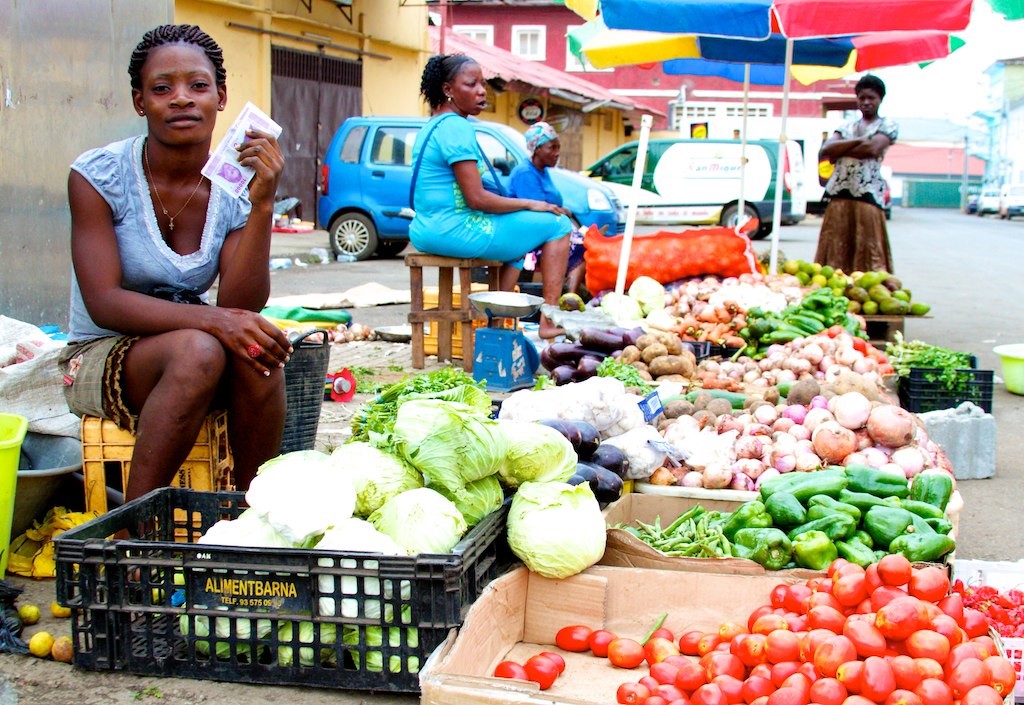Tackling Hunger in Equatorial Guinea
 Equatorial Guinea (EQG), one of Africa’s smallest countries with a population of 1.8 million—approximately 80% of whom reside in urban areas—lies off the west coast of the continent. The country consists of the Rio Muni mainland and five volcanic islands.
Equatorial Guinea (EQG), one of Africa’s smallest countries with a population of 1.8 million—approximately 80% of whom reside in urban areas—lies off the west coast of the continent. The country consists of the Rio Muni mainland and five volcanic islands.
It stands as the only Spanish-speaking country in Africa, gaining independence from Spain in 1968. Natural resources are dominated by offshore oil reserves, which were discovered in 1995.
Equatorial Guinea has been referred to as a classic example of the “paradox of plenty.” This “resource curse” occurs when an abundance of natural resources leads to a lack of attention to activities to improve economic outcomes, which are then less in comparison to countries with fewer natural resources. At one time, EQG had the highest per capita income in Africa, but this has been coupled with limited social development, and life expectancy and infant mortality below the average for sub-Saharan Africa. This is in part explained by political corruption and limited health and education investment.
The last several years have seen lower-than-expected oil production and prices that, along with global economic events not under the country’s control, have led to a continuing recession, with an exaggerated impact on the most vulnerable. These factors are not likely to change, making economic diversity—especially increasing private activity in non-oil sectors—a high priority.
The government’s most recent economic strategy includes the objective to attract private investment, as well as to prioritize the blue and green economy, energy and tourism and the digital sector.
Hunger and Food Insecurity
Less than 5% of Equatorial Guinea’s GDP comes from agriculture, and less than 30% of demand can be met by domestic food production, with 80% of the population unable to meet their daily nutritional needs. This leads to dependence on imports for food consumption. COVID-19 and Ukraine war supply chain issues have resulted in food price inflation and a high level of food insecurity.
It is difficult to assess the state of hunger and nutrition in Equatorial Guinea because of the sparsity of data available, some of which are five to 11 years old. The most recent Global Nutrition Report for EQG (2022) reports that the country is “on course” for maternal, infant and young child nutrition, and for overweight children under 5 years old (9.7% affected); has made some progress regarding childhood stunting (26.2%—lower than the Africa regional average) and reducing anemia among women of reproductive age (44.5%). For several indicators—sodium intake, raised blood pressure, obesity and diabetes)—the report notes the country is “off course.” The report also notes no national policies regarding the global nutrition targets of women’s anemia, birthweight, breastfeeding, obesity, high blood pressure or diabetes.
The Global Hunger Index 2023 reports that EQG’s child stunting (% of children under 5 years old) is around 25% and child mortality and wasting are both under 10%. While all three indicators have declined since 2000, especially child stunting, which was over 40%, there has been virtually no change in the last decade. Undernourishment data were not available.
Food Security, Agriculture and Climate Control
Equatorial Guinea is vulnerable to the impacts of climate change due to rising coastal sea levels, droughts, frequent storms, floods, rising temperatures and extreme weather events, all of which impact the agricultural sector.
In September 2023, the Government of EQG expressed interest in receiving support from the SCALA program, an initiative of the United Nations Development Programme and the Food and Agriculture Organization of the United Nations: Scaling up Climate Ambition on Land Use and Agriculture. SCALA is addressing the threat of climate change, and its impact on agriculture, livelihood and food security, by supporting participating countries to develop adaptive capacity and to implement low-emission priorities in land use and agriculture.
Equatorial Guinea will be a SCALA “reference country” for climate-smart agriculture in tropical areas, developing measures to guarantee food security, diversify the national economy and reduce the use of agrochemicals, among other objectives. Reduction of food imports through the development of agricultural product value chains and national marketing is an element of the strategy. There will also be an emphasis on developing medium and small producers and introducing climate-smart practices. EQG intends to implement detailing mapping and analysis of the coconut value chain ecosystem and to identify private sector players, challenges, best practices, financial barriers, investment potential and incentives.
– Staff Reports
Photo: Flickr
Updated: October 10, 2024
